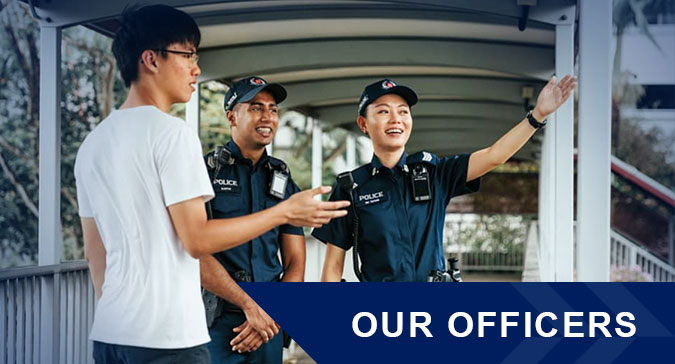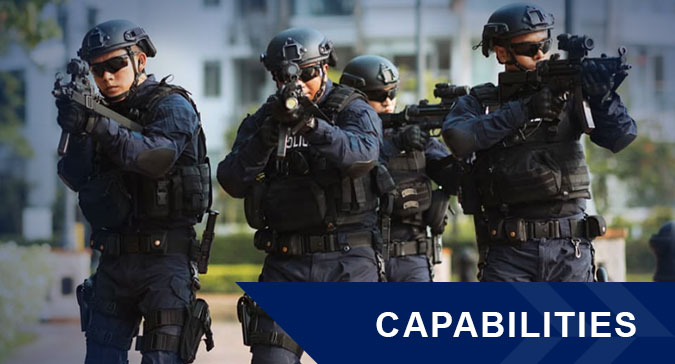All about confidence and knowing what to do – helping PCG officers prepare for capsize scenarios in a range of challenging conditions.
By: Domnic Dass and Rajendran Nadaraja
The Special Task Squadron (STS) of the Police Coast Guard (PCG) comprises highly-trained officers tasked with handling high-risk maritime security operations. STS officers face the risks of a boat capsize during such operations, which may involve high-speed boat chases. Here’s how the PCG leverages technology to train officers for capsize scenarios!
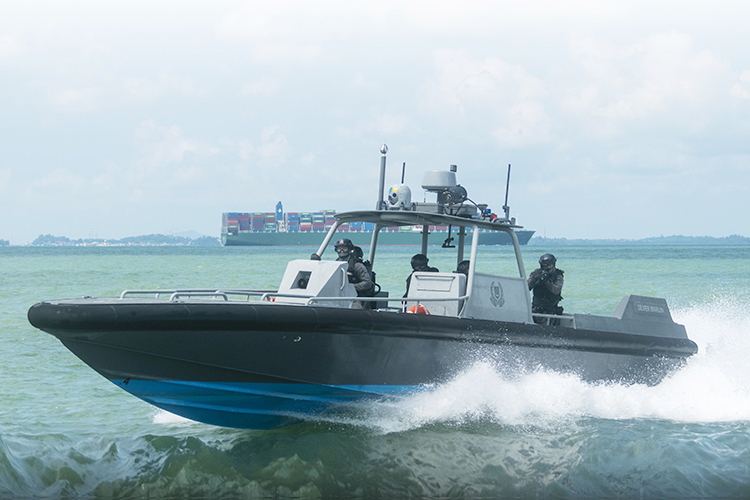
A Matter of Life and Death
Policing Singapore’s territorial waters is a constant challenge. Officers out at sea are not only subject to nature but also heavy maritime traffic as Singapore is one of the world’s busiest ports.
As part of their operations, STS officers operate PK Interceptor boats and PJ-class high-speed assault crafts, which are capable of travelling at speeds above 100kmh. If a mishap such as a boat capsize occurs, the officers must be able to react quickly and skilfully by manoeuvring through obstacles and removing their gear to escape from under the capsized boat. Officers may also have to operate in complete darkness or murky waters while facing strong currents and choppy waters.
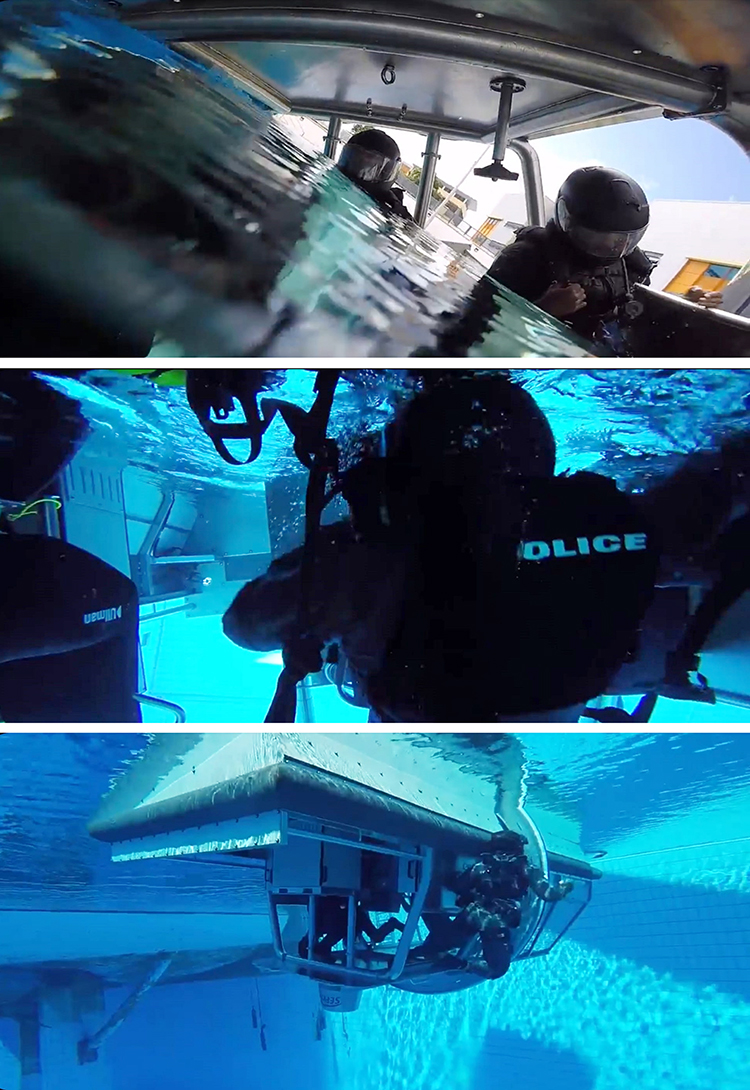
The Underwater Egress Training Simulator (UETS)
The PCG is leveraging technology with the use of the UETS, a simulator designed for training officers in crucial egressing techniques. Introduced in August 2021, the UETS is a new training facility with an automated rig modelled on an operational high-speed interceptor boat.
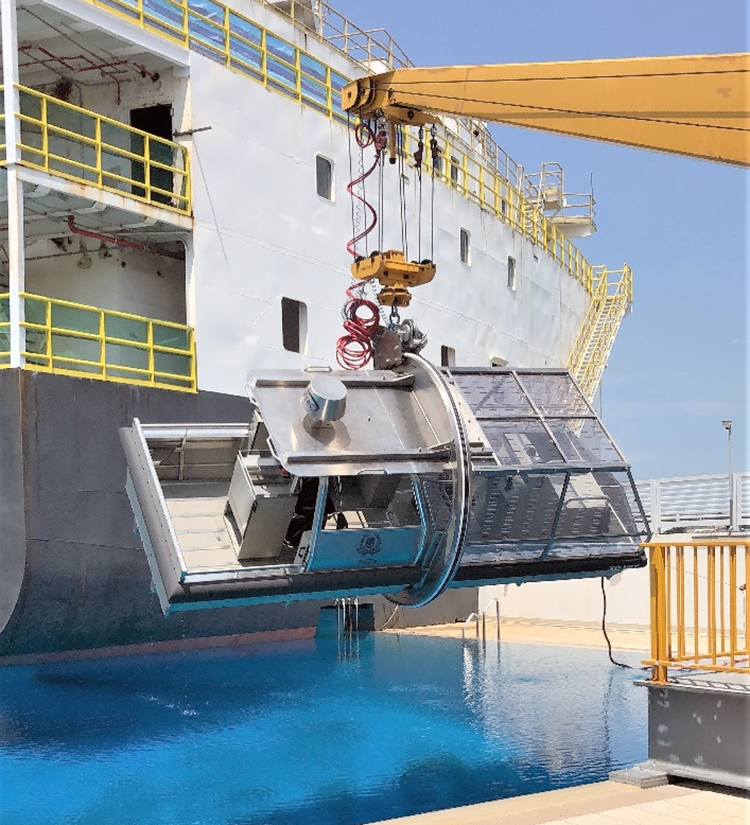
The UETS functions together with a wave generator, which creates waves in the training pool to simulate backwash and other tidal conditions. The UETS can also replicate various physical and environmental conditions that may arise during maritime emergencies. With these functions, the UETS allows officers to train in a realistic environment to help them prepare mentally and physically to handle a boat capsize scenario.
Sharpening the STS’s Capabilities
Station Inspector (SI) Adrian (not his real name) is an Underwater Confidence Trainer for the UETS. He pointed out that in a boat capsize situation, officers may experience disorientation within a confined space. Those who are fully geared up with their operational equipment may also face problems trying to move out from the submerged boat.
“Factors such as visibility, composure and confidence can all impact your egressing strategy when out at sea,” explained SI Adrian.
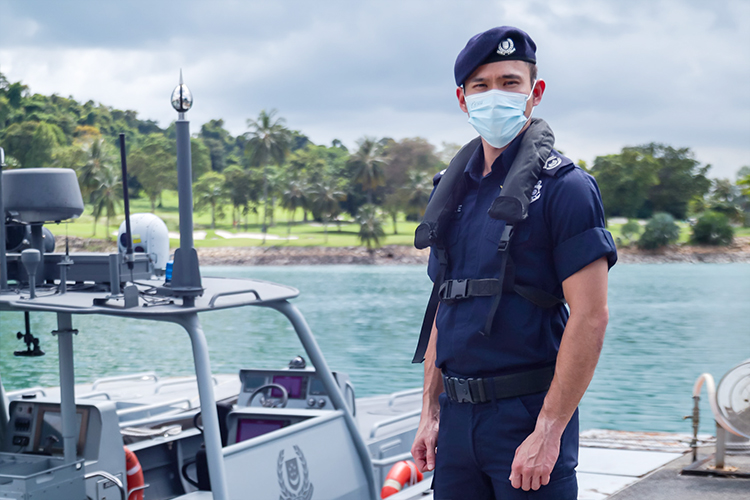
With UETS training, officers will be able to undergo realistic training through different capsize scenarios. Such simulations also help to develop the proper mindset and enhance the officers’ confidence to face similar situations in real-life.
Building Confidence
“I strongly believe that the officers’ confidence is the most crucial element that helps them to be mentally prepared for such situations,” said SI Adrian. “This is also a crucial quality that the UETS helps to build, through the repeated drills we conduct.”
The simulator is modelled on an actual PCG craft, which enables the officers to train within a familiar operating equipment, further helping to enhance their confidence. Explained SI Adrian: “Confident officers out at sea are operationally ready to execute their mission effectively.”


